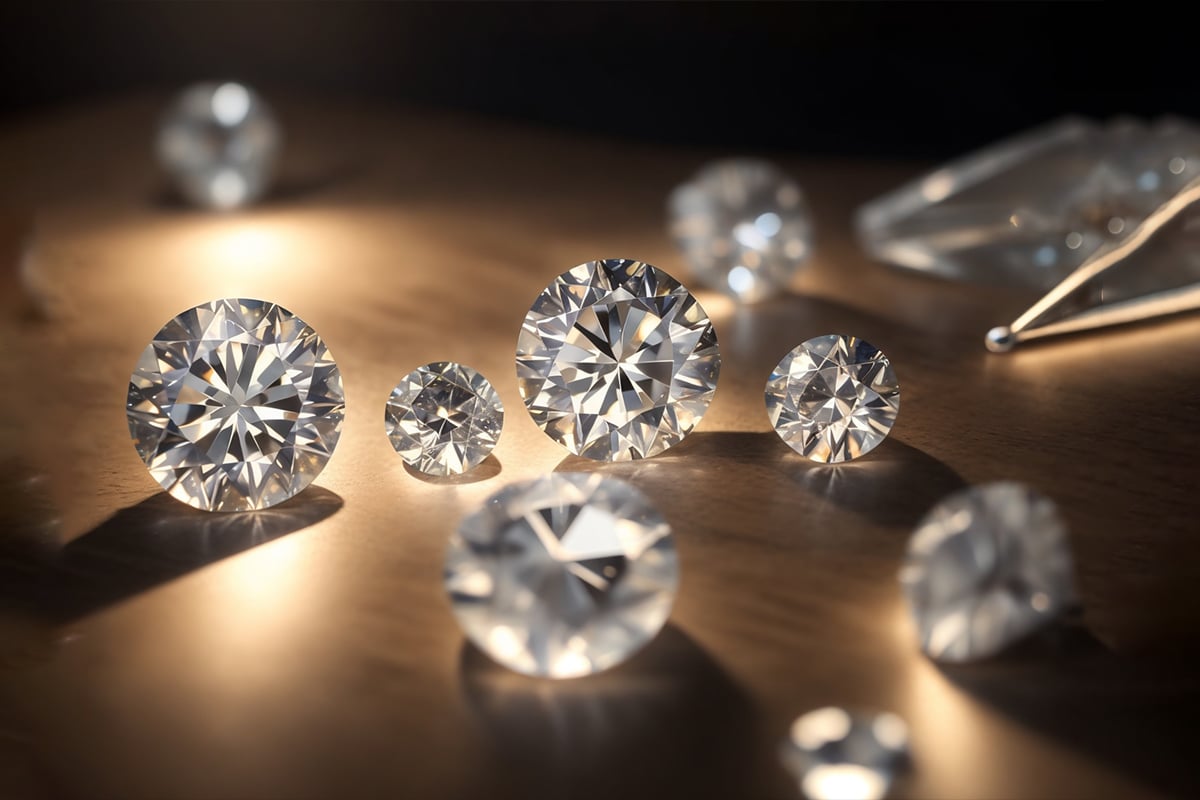Diamonds and moissanites both glitter and shine, but how do you choose between these two dazzling gems? In this guide, we’ll delve into the depths of diamond vs. moissanite, exploring their composition, appearance, durability, cost, ethical considerations, and more. Whether you’re shopping for an engagement ring or simply intrigued by these gemstones, read on to discover the differences and similarities between these two popular choices.
Composition and Properties
Diamonds, formed deep within the Earth’s crust, are composed of carbon atoms arranged in a crystal lattice structure. On the other hand, moissanites are silicon carbide crystals originally discovered in meteorites but are now synthesized in laboratories. While both gems boast impressive brilliance and sparkle, their chemical compositions and physical properties vary significantly.
Chemical Composition of Diamonds
Diamonds are pure carbon, created under intense heat and pressure deep within the Earth’s mantle over millions of years. This natural process results in the formation of the hardest known substance on Earth, prized for its durability and timeless beauty.
Chemical Composition of Moissanites
In contrast, moissanites are composed of silicon and carbon atoms, making them distinct from diamonds. Originally discovered in a meteor crater, moissanite crystals are now grown in controlled laboratory environments, resulting in gemstones with remarkable clarity and brilliance.
Physical Properties Comparison
Both diamond vs moissanites exhibit exceptional brilliance, but their optical properties differ slightly. While diamonds often display a subtle play of colors known as fire, moissanites tend to exhibit more colorful flashes due to their higher refractive index.
Appearance
When it comes to appearance, diamonds and moissanites each have their unique characteristics that appeal to different tastes and preferences.
Brilliance and Fire
Diamonds are renowned for their unparalleled brilliance and fire, captivating onlookers with their scintillating sparkle. The interplay of light within a diamond creates a mesmerizing display of colors, adding to its allure.
Moissanites, with their exceptional dispersion and brilliance, also exhibit remarkable fire, emitting colorful flashes of light that rival those of diamonds. However, some individuals may prefer the rainbow-like fire of moissanites over the subtle hues found in diamonds.
Color Variations
Diamonds come in a spectrum of colors, ranging from colorless to fancy vivid hues such as yellow, blue, and pink. The presence of trace elements and structural defects determines a diamond’s color grade, with colorless diamonds being the most prized for their purity and transparency.
In contrast, moissanites are typically near-colorless or faintly tinted, with minimal color variation across different specimens. This consistency in color makes moissanites an attractive option for those seeking a gemstone with uniform appearance.
Clarity Differences
Diamond clarity refers to the presence of internal and external imperfections, known as inclusions and blemishes, respectively. Clarity grades range from Flawless (no inclusions or blemishes visible under 10x magnification) to Included (inclusions visible to the naked eye).
Moissanites, being lab-created gemstones, are virtually free from inclusions and blemishes, resulting in exceptional clarity and transparency. This clarity characteristic enhances the brilliance and overall appearance of moissanite jewelry.
Durability and Hardness
In the realm of durability and hardness, lab grown diamonds reign supreme as the hardest naturally occurring substance on Earth. However, moissanites are not far behind, boasting impressive scratch resistance and resilience.
Mohs Scale Comparison
Diamonds score a perfect 10 on the Mohs scale of mineral hardness, making them highly resistant to scratches and abrasions. This hardness attribute ensures that diamonds maintain their luster and brilliance even after years of wear.
Moissanites, with a Mohs hardness rating of 9.25, are slightly less hard than diamonds but still surpass most other gemstones in durability. Their hardness makes them suitable for everyday wear, offering peace of mind to those who lead active lifestyles.
Scratch Resistance
One notable advantage of moissanites is their exceptional scratch resistance, surpassing that of many other popular gemstones. This resistance to scratches ensures that moissanite jewelry retains its pristine appearance even with regular use and handling.
Cost and Affordability
Cost is often a significant factor in choosing between diamonds and moissanites, with each option offering its own set of advantages and considerations.
Price Differences
Diamonds, particularly those of high quality and large carat weights, can command premium prices due to their rarity and perceived value. Factors such as color, clarity, cut, and carat weight (the 4Cs) influence the price of a diamond, with flawless, colorless stones fetching the highest prices.
Moissanites, being lab-created gemstones, are generally more affordable than diamonds of comparable size and quality. This affordability makes moissanites an attractive alternative for budget-conscious buyers who desire the look of a diamond without the hefty price tag.
Factors Influencing Cost
Several factors can influence the cost of both diamonds and moissanites, including size, color, clarity, and cut quality. Additionally, market demand, supply availability, and ethical considerations may impact the pricing of these gemstones.
Ethical Considerations
In recent years, ethical considerations surrounding gemstone sourcing and mining practices have come to the forefront, prompting consumers to seek out responsibly sourced alternatives to traditional diamonds.
Conflict-Free Diamonds
One of the main ethical concerns associated with diamonds is the issue of conflict or blood diamonds, which are mined in war zones and sold to finance armed conflict. To address this concern, many jewelers now offer conflict-free diamonds sourced from regions with transparent and ethical mining practices.
Lab-Created Moissanites
Moissanites, being created in controlled laboratory environments, are inherently conflict-free and environmentally sustainable. The process of growing moissanite crystals in a lab allows for ethical production practices and ensures minimal environmental impact.





